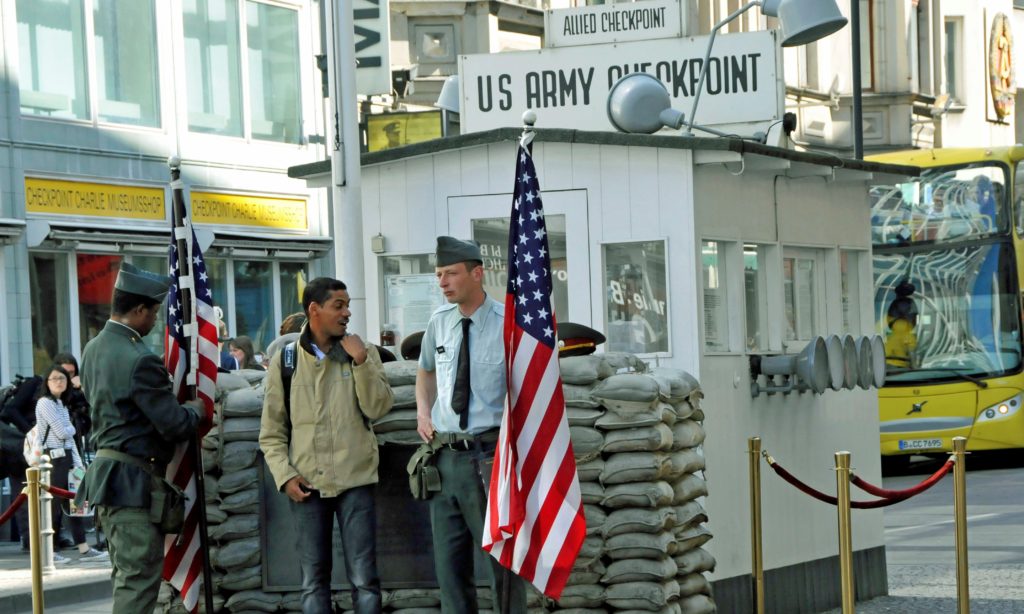
Most Americans above a certain age remember something about Checkpoint Charlie. Today’s visitors to Berlin can encounter its famous guardhouse twice.
At the end of World War II, Berlin, located entirely in East Germany, was divided between East and West. On August 13, 1961, Communist East Germany encircled West Berlin with a fence to prevent its residents from defecting. The fence soon became a 12-foot high concrete wall, patrolled by armed guards and accompanied of a series of other defenses, including beds of nails. East Germany established a number of heavily guarded checkpoints around the wall. Checkpoint Charlie, located along the Friedrichstrasse, an important street in West Berlin, was the only one providing Westerners assess to East Berlin. To demonstrate that the West considered Berlin’s division temporary, an American guardhouse on the West Berlin side of Checkpoint Charlie was a small wooden shack, surrounded by sandbags. Several residents of East Berlin successfully escaped to the West at Checkpoint Charlie. In October 1961, Checkpoint Charlie was the scene of a tense 16-hour confrontation between American and Soviet tanks after East Germany had denied access to Americans.
On November 9, 1989, after the East German government had announced the easing of travel restrictions, thousands of East Berliners stormed Checkpoint Charlie, seeking to enter West Berlin. After a long standoff, guards opened the gates and people traveled freely between East and West Berlin for the first time since 1961. A few months later, the Americans dismantled their facilities at Checkpoint Charlie in an international ceremony and the guardhouse eventually found its way to Berlin’s Allied Museum. A replica of the guardhouse and the rest of the American side of Checkpoint Charlie, at its original location along the Friedrichstrasse, is now a popular Berlin attraction, surrounded by photographs and descriptions of the important events that took place there.
Comments are closed.